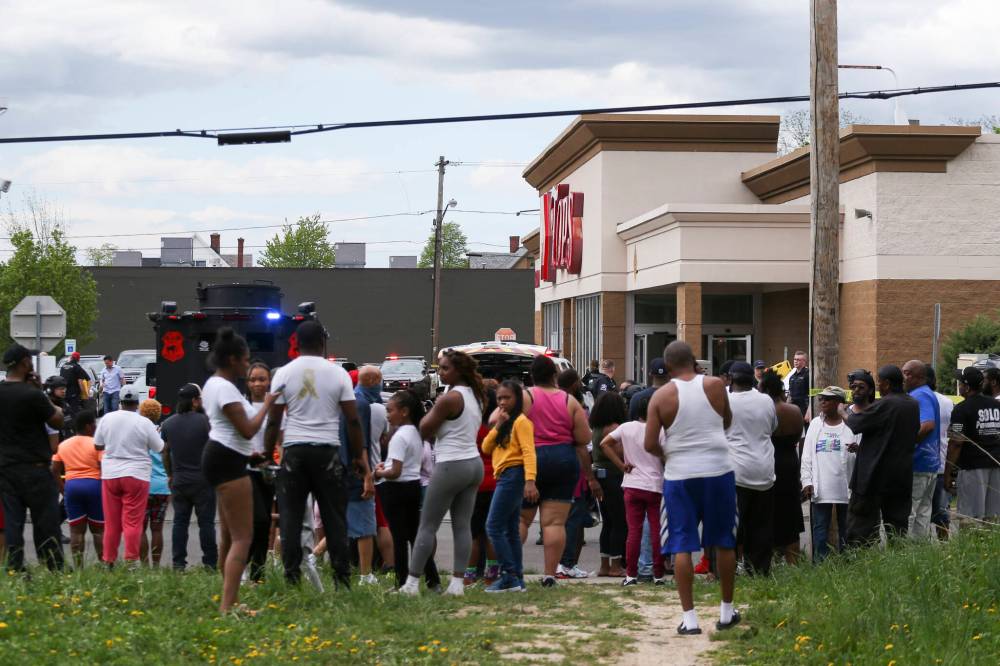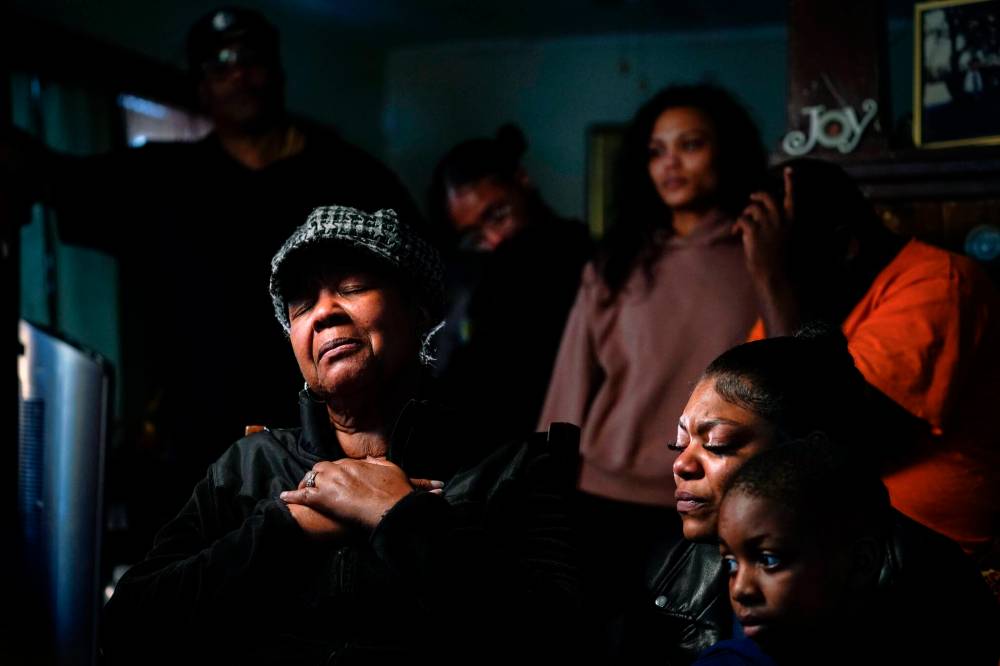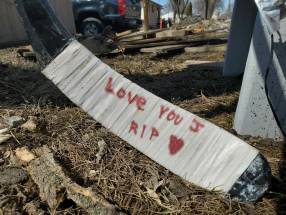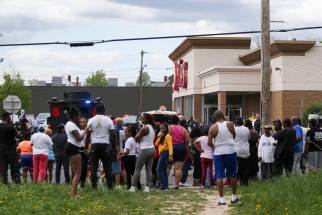Another hateful day Racist supermarket slaughter was sadly inevitable
Read this article for free:
or
Already have an account? Log in here »
To continue reading, please subscribe:
Monthly Digital Subscription
$0 for the first 4 weeks*
- Enjoy unlimited reading on winnipegfreepress.com
- Read the E-Edition, our digital replica newspaper
- Access News Break, our award-winning app
- Play interactive puzzles
*No charge for 4 weeks then price increases to the regular rate of $19.00 plus GST every four weeks. Offer available to new and qualified returning subscribers only. Cancel any time.
Monthly Digital Subscription
$4.75/week*
- Enjoy unlimited reading on winnipegfreepress.com
- Read the E-Edition, our digital replica newspaper
- Access News Break, our award-winning app
- Play interactive puzzles
*Billed as $19 plus GST every four weeks. Cancel any time.
To continue reading, please subscribe:
Add Free Press access to your Brandon Sun subscription for only an additional
$1 for the first 4 weeks*
*Your next subscription payment will increase by $1.00 and you will be charged $16.99 plus GST for four weeks. After four weeks, your payment will increase to $23.99 plus GST every four weeks.
Read unlimited articles for free today:
or
Already have an account? Log in here »
Hey there, time traveller!
This article was published 19/05/2022 (1299 days ago), so information in it may no longer be current.
That afternoon, after visiting her husband at a nursing home, 86-year-old Ruth Whitfield stopped by a grocery store on her way home. That afternoon, Andre Mackniel went to buy a birthday cake for his three-year-old son. Pearl Young, 77, started her day at a prayer breakfast, among the church community she tirelessly supported and dearly loved.
The stories go on. A security guard with three children. A woman in town to support her brother, who is recovering from a bone marrow transplant. A breast cancer survivor and grandmother to seven; a church deacon; a civil rights and education advocate. Members of their communities, loved by their families, loved by their friends.
And these 10 people, gunned down one week ago at a supermarket in Buffalo, N.Y., were, in one sense, selected at random, murdered through the chance they happened to be present at same place and time. To the extent that they had anything in common, first and foremost was a simple sort of goodness: the kind found in human connections and everyday lives.

They were also all Black. The shooter made sure of that. That’s why he chose the supermarket he did: it was in the zip code with the largest percentage of Black residents in his region. When he pointed his weapon at a white store manager, as seen on a clip from the video he livestreamed on social media site Twitch, he apologized and held his fire.
The shooter was 18 years old, and bored. Not at the time of the attack necessarily, but at the juncture he chose hate, he was suffering from “extreme boredom” in the early months of COVID-19. That’s what he wrote in a 180-page screed he released online moments before the attack, laying out his reasons for slaughtering innocent people.
But to the shooter, they were not innocent. To him, he wrote, all non-white Americans are “replacers.” He believes all races should be separate and that white people are under a dire existential threat. The rest of the screed does not need to be dealt with in any detail: his goals, he wrote, were to “kill as many blacks as possible,” “avoid dying” and “spread ideals.”
He accomplished the first two. There’s no need to enable the third.
So, best to describe the screed as a simply regurgitation of white supremacy’s most common tropes: openly fascist, violently antisemitic. Writing in The Atlantic, Graeme Wood described it as a morass of “profound moral deformity, and inability to think about history, science, race, or humanity in sophisticated and adult ways. It is pathetic, stupid, and witless.”
No clearer or more fair a review can be made of it than that.

Yet the part about how “extreme boredom” led him to hate, that part stood out. In the screed, the shooter describes clearly how he found the digital pipeline that sucked him into the internet’s increasingly open swamps of rage. How he was bored, so in May 2020 he started looking at political “infographics, shitposts and memes” on anonymous message board 4Chan.
From that site, which has been a common stepping stone to radicalization, the shooter moved on to white supremacist and neo-Nazi websites, he wrote. He found a video of the 2019 white supremacist terrorist attack on a mosque in Christchurch, New Zealand, that killed 51 people; he began to idolize the Christchurch shooter, and decided to plan his own murders.
That this journey is so predictable should sound the alarm. We’ve seen it before, in the same or slightly different forms: just weeks ago, a man in Washington, D.C., who shot four people at random posted videos of the shootings to 4Chan, and stayed posting as police searched for his apartment. He then killed himself, but his last moments were spent online.
The profiles of the people radicalized through that and other sites tend to be similar. They’re always bored, when they start. Bored and dislocated and seeking some sort of meaning. The hate they find there gives them a purpose: they can be heroes, first and foremost to those toxic communities which marinate in rage, cheer on violence, and feed on racial resentment.
Before the attack, the Buffalo shooter wrote that he expected to one day be freed from prison, as a hero to his people.
There are words I have written before, and will no doubt write again: among the most important tasks for any society is the work of healthily socializing its young men. The white supremacist terror attack in Buffalo, and the string of similar attacks that the shooter names as his inspirations, tell us we are failing this test.
Yes, this goes for Canada too. On the day of the Buffalo attack, former Liberal cabinet minister Catherine McKenna tweeted she felt “fortunate to live in Canada,” forgetting that it’s been just one year since an anti-Muslim terrorist attack in London, Ont., killed four people, and five years since six worshippers were murdered at a Quebec City mosque.
If we are to resist the ideologies that spur this violence, to deny it a chance to spread, it will take a commitment at all levels.
We cannot turn off the digital taps of hate, not entirely. The internet is ungovernable. If one site tightens its moderation, or is taken down entirely, others pop up. Youth will be exposed to white supremacist propaganda; the question is whether they will have the tools to negotiate what they encounter, to view it critically, to resist what it whispers into their brains.
The process of adequately equipping youth to negotiate this propaganda begins at home, and in schools, and in the media: or, in other words, every place where we have a chance to convene dialogues about community and race. We have to speak honestly about how hate operates, and how it seduces those who are searching for some sort of meaning.
And the process of resisting radicalization also begins by working to ensure that youth feel and know themselves as part of a broader community: one that defines itself through bridges built and belonging to people and place. One in which validation is found not by how much hate one can unleash, but through what connections one can create.

In the 10 lives so brutally stolen in Buffalo, we see what that type of community looks like: stories of belonging, of family, of an everyday sort of goodness. In the motives of the one young man who killed them, we see what can happen when a desire for purpose becomes twisted by forces of hatred that will always be there, lying in wait.
melissa.martin@freepress.mb.ca
Our newsroom depends on a growing audience of readers to power our journalism. If you are not a paid reader, please consider becoming a subscriber.
Our newsroom depends on its audience of readers to power our journalism. Thank you for your support.










